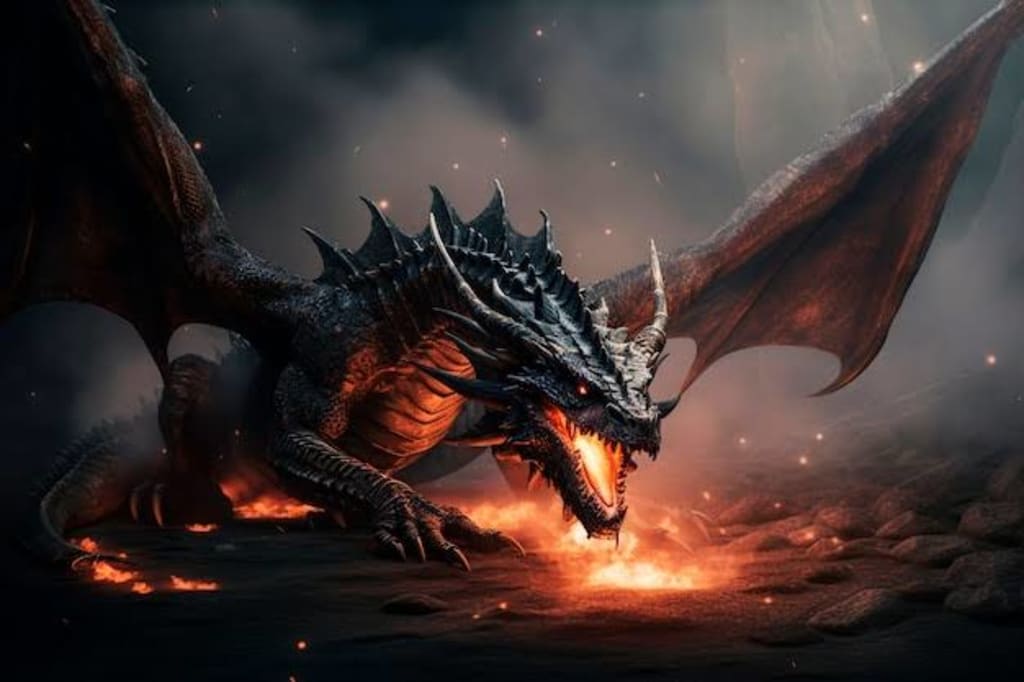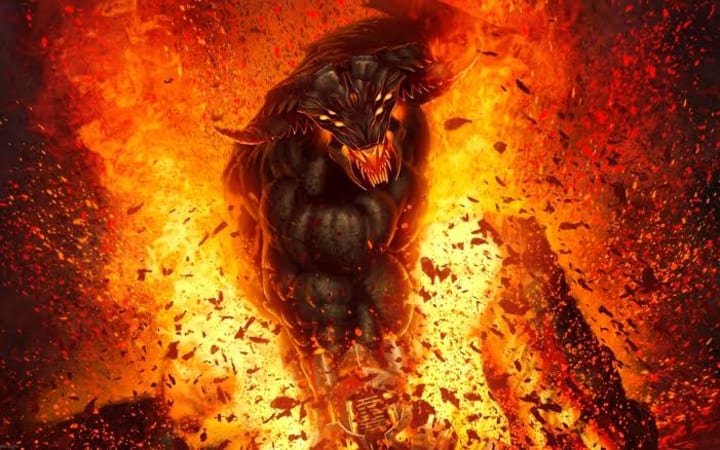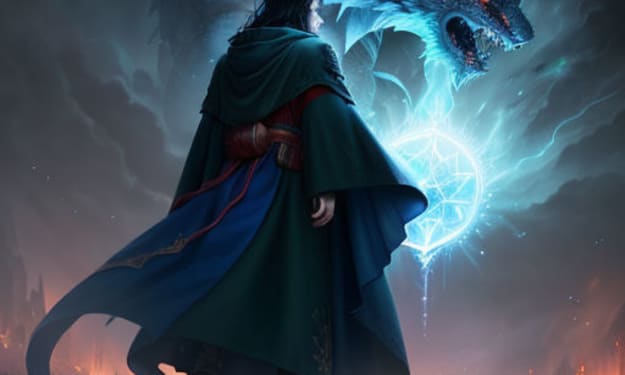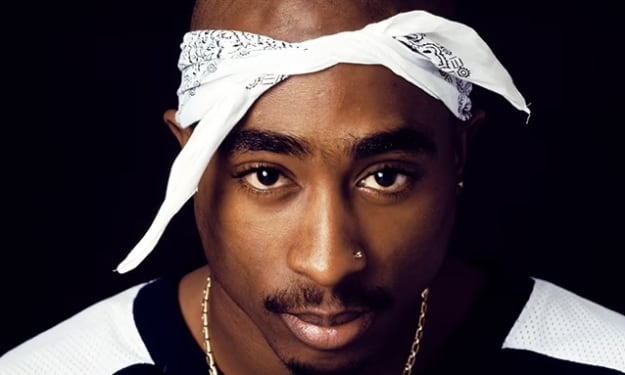Journey Through the Inferno
A Riveting Exploration of Dante's Masterpiece

The Dark Forest: Where Dante's Journey Begins
Dante's harrowing journey commences in a dark forest, symbolizing a profound midlife crisis. At thirty-five, he finds himself spiritually and morally lost, wandering through a terrifying wilderness. This forest represents the confusion and poor choices that have led him astray, enveloping him in fear and uncertainty with no clear path forward.
### Virgil's Arrival: A Beacon of Hope in the Darkness
In this bleak moment, Dante encounters Virgil, the illustrious Roman poet, who embodies wisdom and guidance. Sent by Beatrice, Dante's celestial love, Virgil becomes his mentor and guide, offering hope and a path forward on this arduous journey toward redemption.
### Entering Hell: The Point of No Return
As they approach Hell's gates, a foreboding inscription greets them: "Abandon all hope, ye who enter here." These chilling words set the tone for the horrors that await, marking the point of no return from the torments beyond.
### Limbo: The Realm of the Virtuous Non-Christians
Their journey begins in Limbo, the first circle of Hell. Unlike the other circles, Limbo is not a place of physical torment but one of profound sadness. It houses virtuous individuals who, though morally upright, did not follow Christ. Here reside notable figures like Homer and Socrates, who, while spared from agony, suffer eternal separation from God.
Dante joins these noble souls in their dignified acceptance of their fate. Virgil, his guide, introduces him to these distinguished inhabitants, whose deep sorrow stems from their awareness of their eternal distance from divine grace.
### The Second and Third Circles: Torments of Lust and Gluttony
Descending further, Dante and Virgil witness the torments of the Second and Third Circles. In the Second Circle, the lustful are buffeted by relentless, violent winds, mirroring the chaos of their uncontrolled desires in life. The Third Circle, reserved for gluttons, subjects its inhabitants to a ceaseless barrage of icy rain and filth, patrolled by the monstrous Cerberus.
Dante's vivid descriptions of these punishments emphasize the poetic justice inherent in his vision, where each sin's consequence is a fitting reflection of the sinner's earthly actions.
### Wrath and Greed: Circles Four and Five

The journey continues into the Fourth and Fifth Circles, where the sins of wrath and greed are punished. In the Fourth Circle, the wrathful engage in eternal combat, illustrating the destructive nature of uncontrolled anger. The Fifth Circle, reserved for the greedy, sees sinners weighed down by heavy stones, symbolizing the burdens of their insatiable desires.
Dante's powerful imagery in these circles prompts readers to contemplate the consequences of their spiritual failings and the moral order of the afterlife.
### The Sixth Circle: Heresy and the Burning Tombs
Dante and Virgil's descent brings them to the Sixth Circle, where heretics are punished. Encased in burning tombs, these souls suffer for their denial of the Christian faith. The City of Dis, guarded by Medusa and the Furies, is home to these tormented spirits, their punishment a stark reminder of their misguided beliefs.
### The Seventh Circle: Violence in Three Rings
The Seventh Circle is divided into three rings, each representing different forms of violence: against others, against oneself, and against God. In the first ring, murderers and robbers boil in a river of blood. Suicides, in the second ring, are transformed into gnarled trees, eternally tortured by harpies. In the third ring, blasphemers and usurers endure a scorching desert, symbolizing their offenses against the divine and humanity.
Dante's intricate allegory in this circle underscores the precise and fitting nature of each punishment, reflecting the gravity of the sins committed.
### The Eighth Circle: Malebolge and the Depths of Deceit
The journey through Hell's depths leads to the Eighth Circle, Malebolge, where fraud and hypocrisy are punished. This circle comprises ten bolgias, each housing a different form of deceit. Sorcerers, who sought to see the future, must now walk backward, while thieves are perpetually attacked by serpents, embodying the treachery they practiced in life.
### The Ten Bolgias: A Labyrinth of Deception
Each bolgia within Malebolge presents a unique punishment for various forms of fraud. Sorcerers endlessly march backward, symbolizing the distortion of their visions. Thieves suffer snake attacks, reflecting their duplicity. Corrupt politicians, immersed in boiling pitch, are watched by demons who ensure their continual suffering.
Dante's encounters with these sinners, including corrupt popes and infamous historical figures, reveal the profound moral lessons embedded in his narrative. The Malebranche demons, who oversee this circle, add to the eerie and punitive atmosphere, ensuring the sinners face their deserved fates.
### The Ninth Circle: The Frozen Lake of Cocytus
At the lowest depths of Hell lies the Ninth Circle, reserved for the gravest sin—treachery. Here, traitors endure eternal suffering in the frozen lake of Cocytus. This circle is divided into four regions, each for different types of betrayal: family, homeland, guests, and masters.
### The Four Regions of Treachery
In Caina, traitors to family are encased in ice, symbolizing the coldness of their betrayal. Antenora houses traitors to their homeland, frozen deeper than Caina. Ptolomaea is for those who betrayed guests, while Judecca, the lowest region, punishes those who betrayed their masters.
### Lucifer: The Ultimate Betrayer
At the very center of Hell, Dante and Virgil encounter Lucifer, the embodiment of ultimate treachery. Trapped in a massive block of ice, Lucifer's three faces are a grotesque parody of the Holy Trinity. Dante and Virgil must navigate past him to continue their journey.
### Ascent and Redemption: Moving Toward Purgatorio
After traversing the depths of Hell and witnessing the most egregious sins, Dante and Virgil begin their ascent toward Purgatorio. This transition marks a significant shift in Dante's spiritual journey, from the depths of sin to the possibility of redemption and enlightenment.
### Conclusion: A Journey of Reflection and Transformation
Dante's journey through the Inferno is a profound exploration of sin, punishment, and the human condition. Each circle, with its unique torments, offers a stark reminder of the consequences of moral failings. Through this harrowing descent, Dante gains invaluable insights into the nature of sin and the importance of righteousness.
As readers, we are invited to reflect on our own lives, considering the impact of our actions and the pursuit of redemption. Dante's vivid imagery and allegorical storytelling continue to captivate and inspire, reminding us of the power of literature to illuminate the deepest aspects of the human experience.
About the Creator
Local Man
I am a dedicated writer known for my versatility and creativity. With a strong passion for storytelling, engaging content across a variety of genres, including articles, blogs, and copywriting.
Enjoyed the story? Support the Creator.
Subscribe for free to receive all their stories in your feed. You could also pledge your support or give them a one-off tip, letting them know you appreciate their work.






Comments (1)
Enjoyed your awesome work.